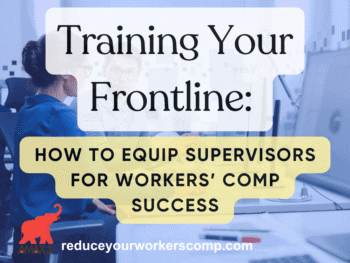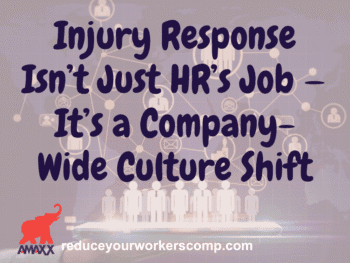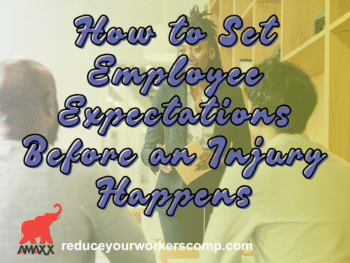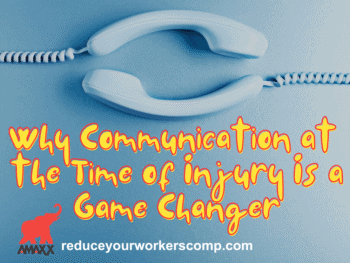
The Link Between Fear and Litigation
Studies have consistently identified fear as a major driver of workers’ compensation litigation. Employees who are uncertain about their job security are more likely to seek legal representation as a protective measure. Key reasons why fear escalates claims include:
- Unclear Communication: If an injured employee is unsure about their benefits, return-to-work expectations, or job security, they may assume the worst and take legal action.
- Lack of Employer Support: When an employee feels like their employer does not care about their well-being, they are more likely to seek outside help.
- Past Negative Experiences: If a company has a history of poorly handling claims or has terminated employees following an injury, fear will be heightened.
The consequences of these fears are significant. Workers who believe their jobs are at risk may delay their recovery, experience heightened stress, and ultimately cost their employers more in claims expenses due to prolonged disability or legal fees.
Click Link to Access Free PDF Download
“9-Element Blueprint To Create Your Workers’ Comp Employee Brochure”
How to Reduce Fear and Build Trust
The good news is that employers can take simple, proactive steps to eliminate fear and improve claim outcomes. Here’s how:
1. Set Clear Expectations from Day One
One of the most effective ways to reduce fear is to provide employees with a clear understanding of the workers’ compensation process before an injury ever occurs. Employers should:
- Develop an Employee Workers’ Compensation Brochure that explains what to expect if they get hurt.
- Provide information during onboarding about medical treatment options, return-to-work policies, and wage replacement benefits.
- Ensure that employees know who to contact if they have concerns.
2. Reassure Employees About Job Security
Fear of termination is a leading reason why employees seek legal representation. Employers can counteract this by:
- Reinforce the company’s commitment to taking care of injured employees.
- Making it clear in company policies that an injury will not automatically lead to job loss.
- Training supervisors to reinforce this message when talking with injured employees.
3. Improve Communication Immediately After an Injury
The first few days following an injury are crucial in setting the tone for how an employee feels about the process. Employers should:
- Conduct a First-Day Phone Call to check on the injured worker, express concern, and explain next steps.
- Provide a Get-Well Card to show that the company genuinely cares about their recovery.
- Assign a designated contact person to address concerns and provide regular updates.
4. Maintain Consistent Follow-Up and Support
Ongoing communication is key to preventing employees from feeling abandoned. Employers should:
- Schedule Weekly Meetings with Injured Employees to check on their recovery and answer questions.
- Work with medical providers to set realistic return-to-work plans so employees feel involved in the process.
- Provide modified or transitional duty options to keep employees engaged and prevent them from feeling like they are being sidelined.
5. Train Managers and Supervisors on Empathetic Communication
Frontline managers play a critical role in how employees perceive the workers’ comp process. Employers should:
- Train supervisors to respond with empathy and reassurance rather than skepticism or indifference.
- Teach managers how to communicate clear expectations about medical treatment and return to work.
- Encourage positive relationships between employees and management to foster a culture of trust.
The Bottom Line
Fear is one of the most significant, yet preventable, obstacles in workers’ compensation management. When employees fear for their job security, claims become more expensive, litigation rates increase, and return-to-work timelines are extended. Employers who take a proactive approach to clear communication, reassurance, and ongoing support will see significant improvements in both employee well-being and overall claims costs.
By implementing these strategies, businesses can create a culture where injured employees feel secure, supported, and motivated to return to work, ultimately leading to better outcomes for both workers and employers.

Contact: mstack@reduceyourworkerscomp.com.
Workers’ Comp Roundup Blog: http://blog.reduceyourworkerscomp.com/
Injury Management Results (IMR) Software: https://imrsoftware.com/
©2025 Amaxx LLC. All rights reserved under International Copyright Law.
Do not use this information without independent verification. All state laws vary. You should consult with your insurance broker, attorney, or qualified professional.

















